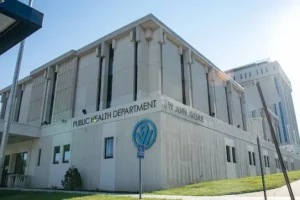As the festive season brings increased alcohol consumption, high-intensity drinking emerges as a critical public health concern, surpassing the risks of binge drinking.
As December unfolds, heralding the festive season, many find themselves indulging in convivial gatherings accompanied by a surge in alcohol consumption. Yet, the issue of excessive drinking extends far beyond holiday revelry, posing a grave societal challenge throughout the year.
While the hazards of binge drinking have been extensively examined, experts now underscore an even graver peril: high-intensity drinking. This escalating trend, particularly prevalent among middle-aged demographics, demands urgent attention due to its profound repercussions on individual and public health.
Decoding Binge Drinking Versus High-Intensity Drinking
The term binge drinking gained traction in a 1993 study led by social psychologist Henry Wechsler, characterizing it as the ingestion of four to five alcoholic beverages within a two-hour span. However, subsequent findings have revealed that the most dire consequences—alcohol poisoning and memory blackouts—often occur beyond this threshold.
Conversely, high-intensity drinking is delineated as consuming at least eight consecutive drinks for women and ten or more for men. This elevated level of consumption amplifies the dangers associated with alcohol misuse.

The Physiological Fallout of High-Intensity Drinking
Dr. George F. Koob, speaking to The New York Times, cautioned that high-intensity drinking can elevate blood alcohol concentration (BAC) to levels exceeding 0.2 percent—more than double the BAC typical of binge drinking, which hovers around 0.08 percent. Such extreme levels substantially heighten the likelihood of injuries, overdoses, and fatalities.
Keith Humphreys, an addiction specialist and psychologist at Stanford University, further elaborated on the profound dangers of high-intensity drinking. He noted that this behavior often leads to “complete blackouts,” leaving individuals perilously intoxicated, imperiling both themselves and those around them. Furthermore, the propensity for self-harm or causing harm to others rises precipitously in such states. Dr. Koob emphasized that recurrent episodes of excessive drinking markedly increase the probability of developing alcohol dependency.
NHS Guidance on Managing Alcohol Consumption
The National Health Service (NHS) underscores the severe ramifications of “single-session” drinking—overindulging within a short time span.
According to NHS guidelines, drinking excessively during one occasion can elevate the risk of:
Accidental injuries potentially lead to fatal outcomes.
Misjudging hazardous situations.
Losing inhibitions results in unsafe behaviors such as unprotected intercourse or involvement in violent altercations.
To mitigate these risks, the NHS advises:
Limiting alcohol intake.
Consuming beverages at a slower pace.
Accompanying alcohol with food.
Alternating alcoholic drinks with water or non-alcoholic options.
For individuals concerned about their drinking habits—or those of others—consulting a general practitioner (GP) is a prudent first step. GPs can provide a thorough assessment and recommend tailored interventions to address alcohol-related concerns effectively.
Conclusion
The burgeoning prevalence of high-intensity drinking represents a critical public health issue, demanding increased awareness and proactive measures. As the festive season unfolds, individuals must be vigilant about their alcohol consumption, recognizing that moderation is not just a personal responsibility but a safeguard against avoidable harm.





